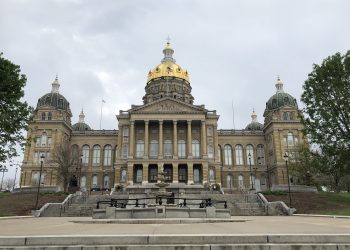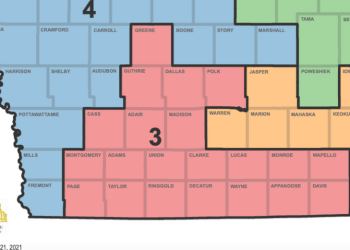Iowans have received their property tax bills, and taxpayers across the state keep asking why their taxes increased so fast. It seems more likely that property taxpayers will see Elvis at their local Casey’s before they see any property tax relief. Iowans across party lines and the urban-rural divide want policymakers to stop making excuses for high property taxes and address the problem.
Now is the time for local governments to provide property tax relief. Iowa cities, counties, and school districts are all beneficiaries of federal dollars from the American Rescue Plan Act (ARPA). Our state will receive over $5 billion from ARPA. Local governments will also receive $1.162 billion. School districts alone will receive $775 million in ARPA funds.
The ARPA funds directed toward cities and counties were primarily based on population. Iowa’s largest city, Des Moines, and largest county, Polk, will each receive close to $100 million. Most, if not all of Iowa’s counties are receiving $600,000.
ARPA funds are intended to cushion lost revenues, provide additional aid to businesses, support public health measures, and fund infrastructure. Regardless of how they are spent, full transparency is needed for all federal stimulus dollars directed at the state or local governments.
Nothing in the ARPA prevents local governments from using the funds to provide property tax relief. In Idaho, some local governments are already cutting property taxes with ARPA funds. Providing property tax relief to individuals and small business owners is a form of economic relief. “Nothing would accomplish these tasks better than cutting property and sales taxes, the two biggest sources of local tax revenue,” wrote Judge Glock, a Senior Policy Advisor at the Cicero Institute.
Local governments across Iowa are discussing how to spend ARPA dollars. Henry County is spending $500,000 on two child care centers; each will receive $250,000. Iowa City is considering using ARPA funds to provide “grants” to illegal immigrants. Local governments will be confronted with countless ideas from various interests on how to spend the money, but the priority should be property taxpayers.
Providing property tax relief with ARPA dollars is not a solution to high property taxes, but it is a start. Too often, governments forget that the money they collect is from taxpayers, and ARPA money is no exception.
Thankfully, a solution exists. Utah’s Truth-in-Taxation law is considered the gold standard of property tax reform laws, and it is the most taxpayer-friendly. Recently Kansas and Nebraska passed legislation closely modeled after Utah’s law. Utah’s Truth-in-Taxation law is revenue-based, which means as valuation increases, property tax rates decrease. This means that local governments receive the same amount of revenue as the previous year, and if they want to increase spending, it triggers the Truth-in-Taxation process.
A crucial component of Truth-in-Taxation is direct notification, which requires all taxing authorities to notify residents of a potential tax increase and how it will impact their property tax bill. Direct notification notices are sent prior to local government budget hearings.
Direct notification provides more transparency and empowers taxpayers with information showing how much their property tax bill will increase. The benefit is that it forces a conversation between the taxpayer and their local governments. Local governments should have to justify why they want to spend more taxpayer dollars.
Kansas already sees results from direct notification, and over 200 local government entities are not raising property taxes. Truth-in-Taxation has a proven track record of ensuring that local governments are honest, especially concerning windfalls from increased assessments and controlling property taxes’ growth.
Returning ARPA dollars to taxpayers and implementing a Utah-style Truth-in-Taxation requirement are two ideas that will finally place the taxpayer first.















